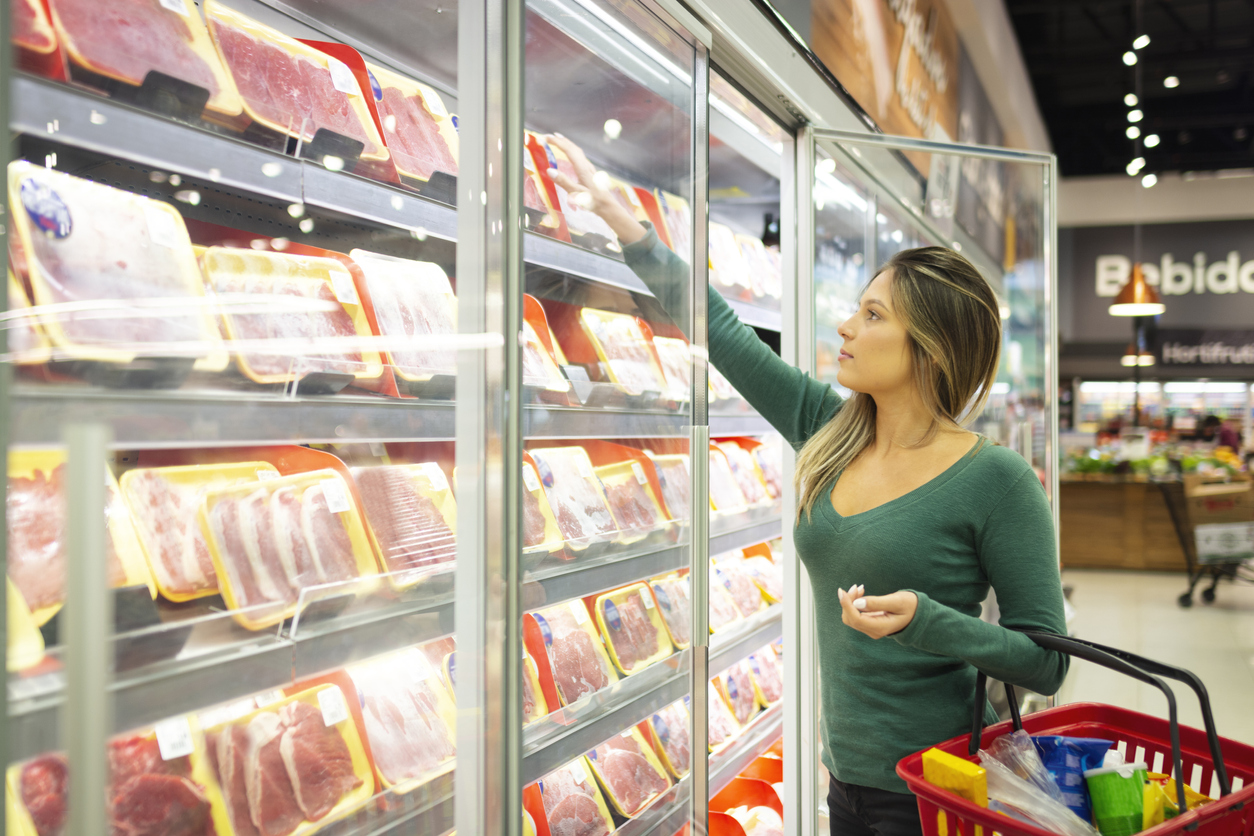The energy used to grow, process, package and transport food accounts for about a quarter of global greenhouse gas emissions. But not all food is equally carbon-intensive.
Researchers can measure the impact of different food choices at each stage of their journey – from farm to fork – to work out their carbon footprint.
Experts suggest that, to reduce your food-related carbon footprint, the best dietary changes to make include replacing red meat and dairy products with plant-based alternatives, and avoiding products that are flown in, or grown in a commercial greenhouse.
In our research, we found that many people aren’t aware of this advice. In a national UK sample, most people mentioned one or two dietary changes for reducing the climate impact of their food choices, but they rarely mentioned the strategies that experts suggest are the most effective.

Respondents in our study thought that buying local and organic were the best choices for the climate, with reducing packaging and avoiding processed food coming close behind.
Although these strategies can have benefits for the environment and animal welfare, they are far from the most effective strategies for mitigating climate change.
Even the respondents who were most engaged with environmental issues were often ill informed – rarely mentioning the most effective strategies and frequently suggesting relatively ineffective ones.
This suggests that advice about how people can make more sustainable food choices isn’t even reaching the ones who might want to do the most.
So why are people in the dark about the right dietary choices for the climate?
Well-intentioned but misinformed
For one, corporate sustainability campaigns tend to shift responsibility onto consumers by focusing on reusing and recycling packaging. This has the obvious appeal of presenting no risk to a company’s bottom line.
Although reducing the amount of plastic packaging that ends up in landfill is important, it’s unlikely to make much difference to climate change.
It also doesn’t help that there is so much information to process, and so many complex choices to make. What should we do when the organic vegetables are wrapped in plastic and non-organic ones aren’t?
Or when the milk-based yoghurt pot is decorated with a landscape of happy cows wandering free in lush fields, while the plainly packaged soy yoghurt conjures images of the Amazon burning to ashes?
What about when the fresh bananas arrive from Ecuador but the local Scottish strawberries are kept in the freezer? Whether it’s plastic packaging versus organic produce, animal welfare versus deforestation, or travel miles versus energy consumption, there is a lot to consider.

Another cause for confusion might be the nature of advice given by climate experts. Often, the climate impact of food choices is presented in terms of grams of greenhouse gas emissions.
We found that people were confused when they were asked “how many grams of greenhouse gas emissions could be saved by growing 1 kg of produce organically instead of conventionally?”, or “packing 1 kg of produce into a paper bag instead of plastic”?
They were less confused and could answer more accurately when asked the same questions about the percentage of the greenhouse gas emissions that could be saved.
Making decisions
For most of us, decisions about what to eat involve many factors, including how healthy or tasty food is likely to be. We simply don’t have the time, the motivation, or the ability to always figure out exactly which food option has the lowest carbon footprint.
Making choices becomes a lot easier when we have heuristics, or simple rules of thumb. One example is the five-a-day rule, which encourages people to eat five portions of fruit and vegetables each day.
It’s much easier to follow than weighing and adding up your daily intake of different fruits and vegetables to see if you’ve consumed the necessary amount in grams.
Popularising simple rules of thumb – like replace red meat and dairy with plant-based products – helps people skip the stupefying step of computing the complex carbon footprint of every single meal they eat. They allow people to make fast and effective decisions about what to eat.

Heuristics are remarkably effective compared to more complex strategies for making decisions. According to research in psychology, this is probably due to them being easier to remember, implement in different situations, and stick to over time.
If you want to reduce the climate impact of our food choices, try to replace red meat and dairy with plant-based products more often, and avoid products that are flown in or grown in a greenhouse. These choices would be good for the climate, with the added bonus of being good for your health.

Joel Millward-Hopkins, Postdoctoral Researcher in Sustainability, University of Leeds; Astrid Kause, Research Fellow, Management, University of Leeds, and Wändi Bruine de Bruin, Provost Professor of Public Policy, Psychology, and Behavioral Science, University of Southern California
This article is republished from The Conversation under a Creative Commons license. Read the original article. Image courtesy of iStockPhoto.com.






